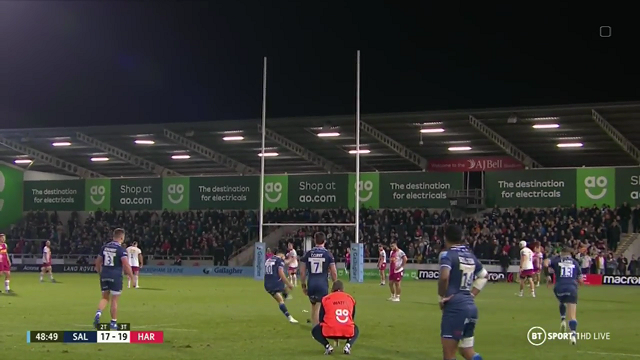How to swing for the fences: goal-kicking and the golf game
Dave Alred is the most outstanding rugby kicking coach of the professional era. The names of those he has guided to kicking success reads like a Who’s Who? – Jonny Wilkinson, Johnny Sexton, George Ford and Beauden Barrett are just a few of his students.
He also happens to double as one of the top coaches of a golf swing, having prompted Francisco Molinari, Padraig Harrington and Luke Donald to either Major wins, or the number one ranking in the world.
How can he switch between the two apparently diverse disciplines so easily? This is the answer he gave me while I was writing Phil Larder’s biography a few years ago:
“I guess the similarity is that I deal with ‘one shot, one chance’ performers – the guys who are out there on their own with no-one to blame but themselves, or their technique if something goes wrong in front of 50,000 people."
“I studied a range of performance topics while completing my PhD, and exploring baseball provided a useful tool I used to develop goal-kicking. I found that the best home-run hitters made impact with the ball opposite their centre-of-gravity."
“So, in order to transfer that concept to kicking, I looked to find a way to remain ‘centred’ and push that centred mass towards the ball, so that all of your body is kicking the ball – it just happens to be the foot that makes contact."
“The results of both kicking and swinging a golf club are about 80% mental, and the right mentality is achieved only by repeating the same behaviours until they become virtually second nature.”
There are several glimpses of Alred’s expertise at work on Youtube. Here is one of the shortest and most fundamental. The idea of moving the centred mass of the body through the ball is key in his notion of the ‘J-shape’ adopted during a successful goal-kick.
Another technique which has successfully transplanted from the golf swing into goal-kicking is the bio-mechanical ability to impart either a ‘fade’ (left-to-right movement) or a ‘draw’ (right-to-left) to the ball in the air.
Let’s look at some recent examples of how the fade and the draw work in practice, alongside the idea of moving the whole of the body through the ball at the point of impact.
Where the draw used to be the natural arc for instep, ‘round-the-corner’ goal-kickers in the amateur era, the fade has probably taken over as the weapon of choice in the pros. This is Kieran Wilkinson of the Sale Sharks showing how it’s done:
The ball starts outside the left upright at the start of its flight, then moves back inside it in the course of the kick. Just as a golfer will open up his body in order to hit the fade, the kicker’s body remains very much ‘front-on’ throughout the exercise, using what Dave Alred calls the ‘C-shape’ in his video:
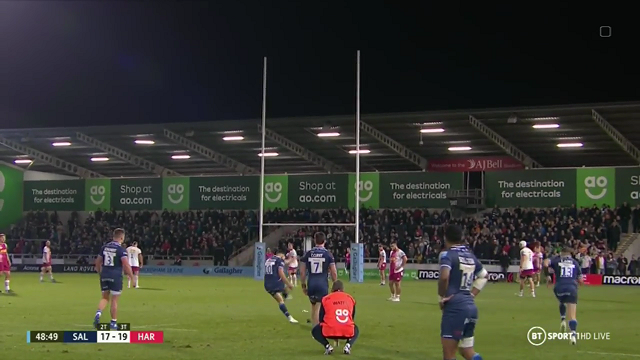
The foot cuts across the ball at the point of impact, imparting a predictable left-to-right movement but also decreasing potential distance. When a fade starts on a line in between the poles, it will often finish by missing to the right of them:
The draw, or mild hook, is probably more familiar to rugby kickers:
In this example, Bristol’s Callum Sheedy starts the ball well outside the right post before drawing it inside the upright in the course of its flight. The body-shape adopted at the point of impact is very different to the fade:
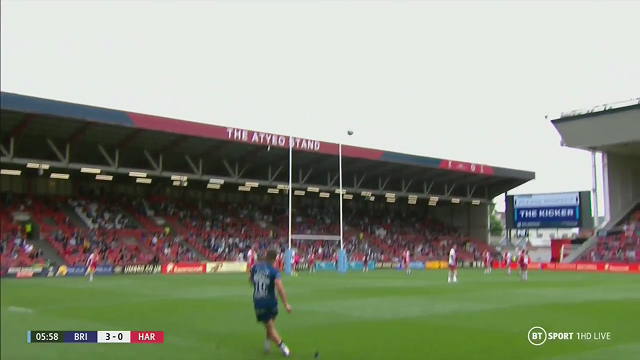
The body is more closed than in the fade and naturally pulls away to the left. The left shoulder stays ahead of the right and the kicking foot crosses to the far side of the planting foot as the strike is completed.
Now let’s take a look at two strikes from similar positions by the same kicker (Harlequins’ Marcus Smith): the first where the body’s centred mass fails to move through the ball, the second when it clearly does so:
In this case the ball starts on line but pulls away to the left of the posts. At the point of impact, Smith’s bodyweight is leaning back and away from the ball:
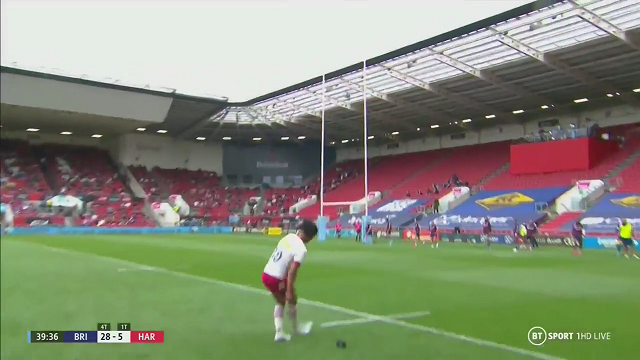
With body’s ‘centred mass’ moving through the ball more purposefully, the flight path is far truer:
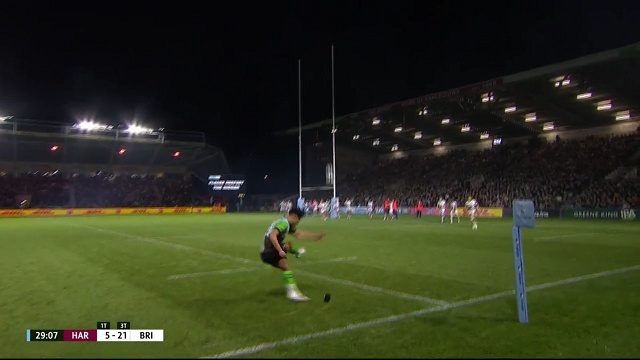
On this occasion, Smith’s centre of gravity remains closer to the ball for longer throughout the duration of the kick, so the outcome is very different.
The crossover between the club swing in golf and goal-kicking in rugby remains a fertile area for exploration, and Dave Alred’s presence as a top coach in both fields illustrates how a study of ball flight and bio-mechanics in the one, can reap concrete benefits in the other.
